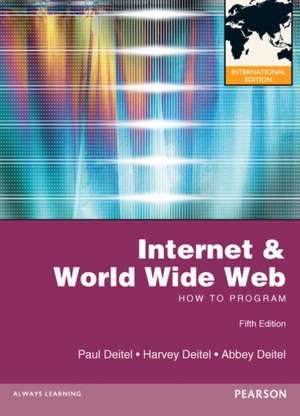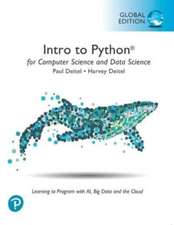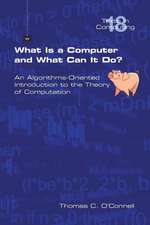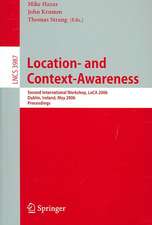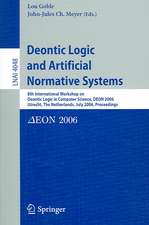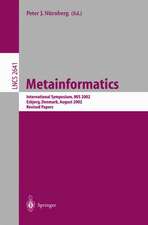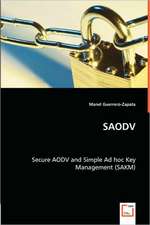Internet & World Wide Web: How to Program
Autor Harvey Deitel, Paul Deitel, Abbey Deitelen Limba Engleză Paperback – 31 ian 2012
Internet and World Wide Web How to Program, 5e introduces students with little or no programming experience to the exciting world of Web-Based applications. The book has been substantially revised to reflect today's Web 2.0 rich Internet application-development methodologies. A comprehensive book that teaches the fundamentals needed to program on the Internet, this text provides in-depth coverage of introductory programming principles, various markup languages (XHTML, Dynamic HTML and XML), several scripting languages (JavaScript, PHP, Ruby/Ruby on Rails and Perl); AJAX, web services, Web Servers (IIS and Apache) and relational databases (MySQL/Apache Derby/Java DB)-all the skills and tools needed to create dynamic Web-based applications. The text contains comprehensive introductions to ASP.NET and JavaServer Faces (JSF). Hundreds of live-code examples of real applications throughout the book available for download allow readers to run the applications and see and hear the outputs. The book provides instruction on building Ajax-enabled rich Internet applications that enhance the presentation of online content and give web applications the look and feel of desktop applications. The chapter on Web 2.0 and Internet business exposes readers to a wide range of other topics associated with Web 2.0 applications and businesses. After mastering the material in this book, students will be well prepared to build real-world, industrial strength, Web-based applications.
Preț: 518.62 lei
Preț vechi: 596.11 lei
-13% Nou
Puncte Express: 778
Preț estimativ în valută:
99.25€ • 103.24$ • 81.94£
99.25€ • 103.24$ • 81.94£
Carte disponibilă
Livrare economică 25 martie-08 aprilie
Livrare express 08-14 martie pentru 69.08 lei
Preluare comenzi: 021 569.72.76
Specificații
ISBN-13: 9780273764021
ISBN-10: 0273764020
Pagini: 960
Dimensiuni: 179 x 237 x 35 mm
Greutate: 1.63 kg
Ediția:5 ed. Auflage
Editura: Pearson Education
ISBN-10: 0273764020
Pagini: 960
Dimensiuni: 179 x 237 x 35 mm
Greutate: 1.63 kg
Ediția:5 ed. Auflage
Editura: Pearson Education
Cuprins
Preface xix Before You Begin xxxi 1 Introduction to Computers and the Internet 1 1.1 Introduction 2 1.2 The Internet in Industry and Research 3 1.3 HTML5, CSS3, JavaScript, Canvas and jQuery 6 1.4 Demos 9 1.5 Evolution of the Internet and World Wide Web 10 1.6 Web Basics 12 1.7 Multitier Application Architecture 16 1.8 Client-Side Scripting versus Server-Side Scripting 17 1.9 World Wide Web Consortium (W3C) 18 1.10 Web 2.0: Going Social 18 1.11 Data Hierarchy 23 1.12 Operating Systems 25 1.12.1 Desktop and Notebook Operating Systems 25 1.12.2 Mobile Operating Systems 26 1.13 Types of Programming Languages 27 1.14 Object Technology 29 1.15 Keeping Up-to-Date with Information Technologies 31 2 Introduction to HTML5: Part 1 37 2.1 Introduction 38 2.2 Editing HTML5 38 2.3 First HTML5 Example 38 2.4 W3C HTML5 Validation Service 41 2.5 Headings 41 2.6 Linking 42 2.7 Images 45 2.7.1 alt Attribute 47 2.7.2 Void Elements 47 2.7.3 Using Images as Hyperlinks 47 2.8 Special Characters and Horizontal Rules 49 2.9 Lists 51 2.10 Tables 54 2.11 Forms 58 2.12 Internal Linking 65 2.13 meta Elements 67 2.14 Web Resources 69 3 Introduction to HTML5: Part 2 76 3.1 Introduction 77 3.2 New HTML5 Form input Types 77 3.2.1 input Type color 80 3.2.2 input Type date 82 3.2.3 input Type datetime 82 3.2.4 input Type datetime-local 82 3.2.5 input Type email 83 3.2.6 input Type month 84 3.2.7 input Type number 84 3.2.8 input Type range 85 3.2.9 input Type search 85 3.2.10 input Type tel 86 3.2.11 input Type time 86 3.2.12 input Type url 87 3.2.13 input Type week 87 3.3 input and datalist Elements and autocomplete Attribute 87 3.3.1 input Element autocomplete Attribute 87 3.3.2 datalist Element 90 3.4 Page-Structure Elements 90 3.4.1 header Element 96 3.4.2 nav Element 96 3.4.3 figure Element and figcaption Element 96 3.4.4 article Element 96 3.4.5 summary Element and details Element 96 3.4.6 section Element 96 3.4.7 aside Element 96 3.4.8 meter Element 97 3.4.9 footer Element 98 3.4.10 Text-Level Semantics: mark Element and wbr Element 98 4 Introduction to Cascading Style Sheets(TM) (CSS): Part 1 105 4.1 Introduction 106 4.2 Inline Styles 106 4.3 Embedded Style Sheets 108 4.4 Conflicting Styles 111 4.5 Linking External Style Sheets 114 4.6 Positioning Elements: Absolute Positioning, z-index 116 4.7 Positioning Elements: Relative Positioning, span 118 4.8 Backgrounds 120 4.9 Element Dimensions 122 4.10 Box Model and Text Flow 123 4.11 Media Types and Media Queries 127 4.12 Drop-Down Menus 130 4.13 (Optional) User Style Sheets 132 4.14 Web Resources 136 5 Introduction to Cascading Style Sheets(TM) (CSS): Part 2 142 5.1 Introduction 143 5.2 Text Shadows 143 5.3 Rounded Corners 144 5.4 Color 145 5.5 Box Shadows 146 5.6 Linear Gradients; Introducing Vendor Prefixes 148 5.7 Radial Gradients 151 5.8 (Optional: WebKit Only) Text Stroke 153 5.9 Multiple Background Images 153 5.10 (Optional: WebKit Only) Reflections 155 5.11 Image Borders 156 5.12 Animation; Selectors 159 5.13 Transitions and Transformations 162 5.13.1 transition and transform Properties 162 5.13.2 Skew 164 5.13.3 Transitioning Between Images 165 5.14 Downloading Web Fonts and the @font-face Rule 166 5.15 Flexible Box Layout Module and :nth-child Selectors 168 5.16 Multicolumn Layout 171 5.17 Media Queries 173 5.18 Web Resources 177 6 JavaScript: Introduction to Scripting 185 6.1 Introduction 186 6.2 Your First Script: Displaying a Line of Text with JavaScript in a Web Page 186 6.3 Modifying Your First Script 189 6.4 Obtaining User Input with prompt Dialogs 19
Descriere
'Internet and World Wide Web How to Program' introduces students with little or no programming experience to the exciting world of Web-based applications.
